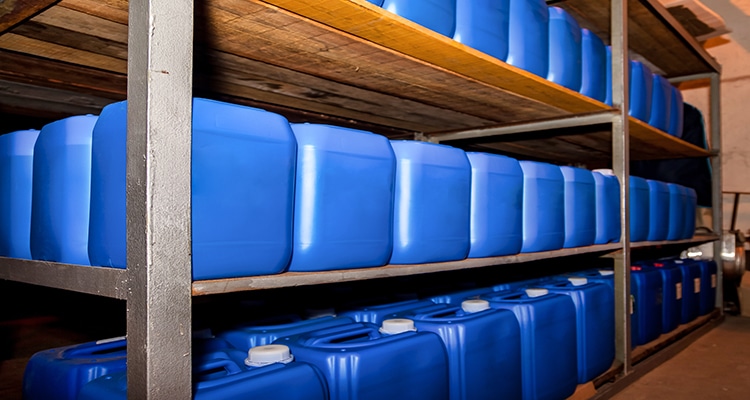This month, we are highlighting another module, our Globally Harmonized System of Classification and Labeling of Chemicals (GHS) Labeling software. This software uses your company’s Safety Data Sheet (SDS) inventory to print GHS-compliant labels for chemicals, specific containers, and transportation requirements. Our customizable system helps each label meet your specific needs.
The GHS is a United Nations system that aims to standardize chemical labeling and protect workers. GHS labels must include six key elements: a signal word, hazard pictograms, manufacturer information, precautionary statements, hazard statements, and product identifiers. Our labeling software manages each of these elements, allowing for easy printing of GHS-compliant labels.
You can quickly create various label formats within the system, including standard GHS, SDS barcode, container-specific, shipping, and color labels. To do this, open the “options” menu from your SDS list view, followed by the “show label” button. Then, select a format for your label.
The system derives standard GHS label information from your specific SDS library, where the SDS parse function can summarize each data sheet. Using this information, the standard GHS labels, with all the required elements, are generated. Hazard pictograms assist workers in quickly gaining information about the chemical, and hazard and precautionary statements discuss the chemical’s potential effects. Additionally, the system uses these components to produce a signal word, such as “danger.”
The ability to print standard GHS labels directly from your SDS inventory promotes compliance with the Occupational Safety and Health Administration’s (OSHA) Hazard Communication Standard, which requires easily accessible labels that contain these elements.
The system can also create simpler labels, such as the SDS barcode label (which contains chemical manufacturer information or hazard pictograms) and container labels that have container-specific information (such as the content’s expiration date and room number).
Our GHS software can also create specific labels for chemical shipments, which is helpful for the International Air Transport Association’s Dangerous Goods Regulations and vessel/railroad transportation requirements. Additionally, the system can generate one-page, shortened SDSs for shipping, which are occasionally required. The system can also print a form called the Uniform Hazardous Waste Manifest, which the Environmental Protection Agency (EPA) often requires for hazardous material shipments.
Perhaps the software’s most novel feature is the color-coding system, which allows workers to quickly note a chemical’s hazard class. Additionally, it is possible to assign color codes to specific locations and print placards with the allowable hazard classes for each room in your facility. This allows workers to check if new chemicals entering a room are suitable for the space by simply checking that the color on the label matches the placard.
In addition to the labels and placards themselves, this information is displayed in a synthesized dashboard, which shows each room’s allowable hazard classes and the chemicals currently there. This allows any discrepancies to be quickly corrected. This feature is incredibly beneficial for compliance with the EPA’s incompatible chemical storage requirements.
We hope this information helps your organization get the most out of our unique GHS labeling module. Next month, we will explore a related module, our Safety Data Sheet Management software.



